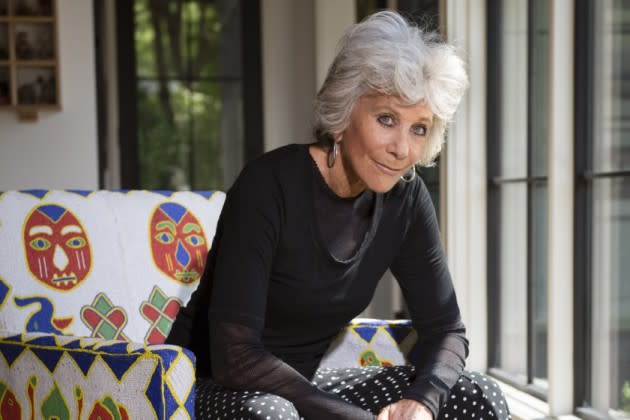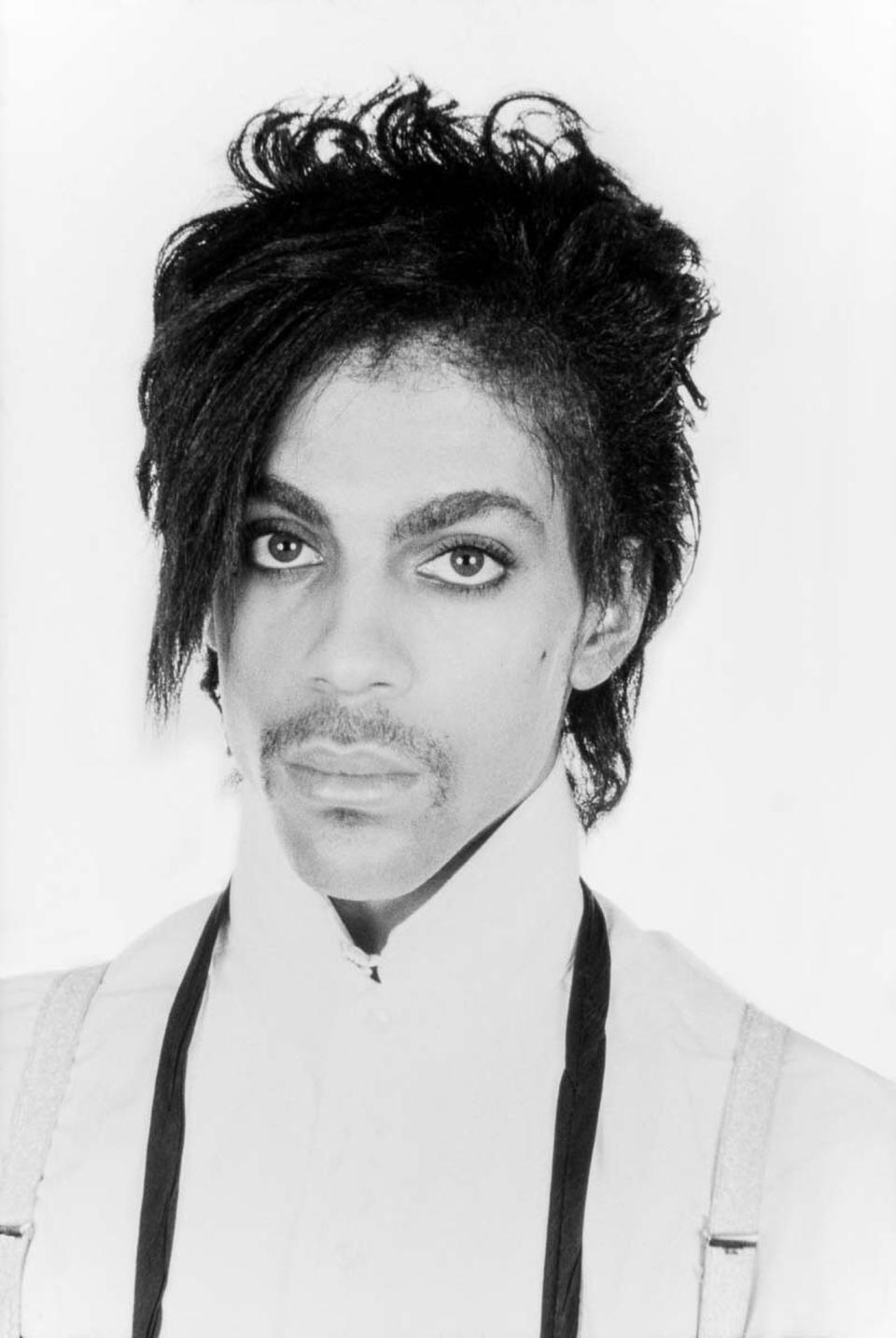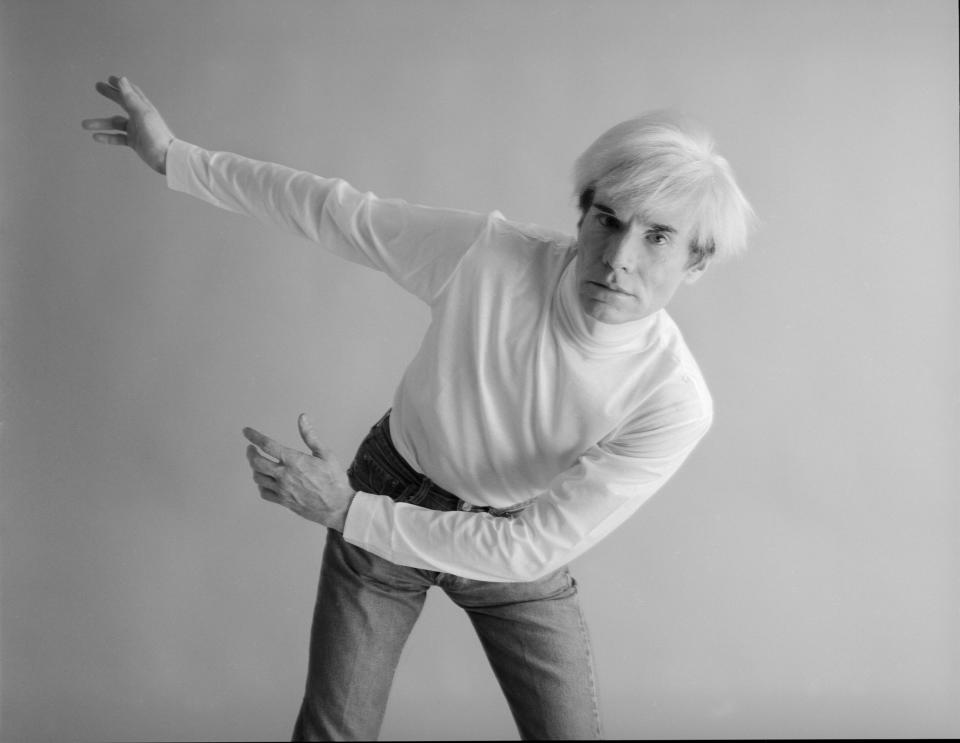Supreme Court Victor Lynn Goldsmith Talks Warhol, Prince and Celebrity Facades
- Oops!Something went wrong.Please try again later.
- Oops!Something went wrong.Please try again later.

“What did I win?”
That was Lynn Goldsmith’s reaction to the hollering friend, who called Thursday to inform her that the Supreme Court had ruled in her favor in a copyright infringement case against the Andy Warhol Foundation for the Visual Artists.
More from WWD
Swatch x Jean-Michel Basquiat Collection Reimagines Iconic Motifs
Beyoncé's Renaissance World Tour Scene-Stealing Looks: Live Updates
ACM Awards Red Carpet 2023: All the Celebrity Looks, Live Updates
Six-and-a-half years into the legal battle, the American photographer and artist had mortgaged her house and invested more than $2 million defending her copyright of a 1981 photograph of the musician Prince. Despite being a pivotal legal case for artists, photographers, musicians, filmmakers and other creatives with copyrighted work, Goldsmith received little financial support from the artist community, including several financially successful celebrity photographer friends.
Speaking from her primary residence in Nashville on Friday, the 75-year-old said she had not been confident that SCOTUS would decide in her favor.
“Oh no. I am not a child. You can’t count on anything, especially in today’s world. You can’t count on people knowing what the facts are. You can’t count on decisions making sense to you. I was incredibly hopeful. Obviously, I wouldn’t have continued in the costly battle both emotionally and financially, if I wasn’t a believer in our justice system and the reading of the Constitution and the rights given to copyright holders,” Goldsmith said.
She said she felt the fair use aspect of copyright law had become broad based on lower court rulings, where people like herself, who are not ”deep-pocketed corporations, foundations or individuals,” with the legal might to fight back lose out. The 2013 ruling in favor of artist Richard Prince, who appropriated a Patrick Cariou copyrighted photograph under fair use, was one example that she cited.
With her lawsuit, the aim was to tighten up fair use or transformative aspects of the law. “It doesn’t mean that an artist isn’t influenced by another artist’s work. But if you are going to take something, take what is in the public domain or if it’s copywritten, ask permission. It’s that simple, unless it’s for educational purposes or other select circumstances [protected] under the copyright law.”
In the 7-2 ruling Thursday, SCOTUS ruled that Warhol infringed on Goldsmith’s copyright by creating a silk screen series based on Goldsmith’s 1981 photo of the musician Prince.
The decision in the highly watched case was considered a major win for artists and writers whose work is copyrighted. At issue was whether Warhol’s work transformed Goldsmith’s portrait of the “Purple Rain” musician to be considered “fair use,” and not copyright infringement. Under copyright law, fair use allows for the unlicensed appropriation of copyright-protected works in educational, noncommercial and other select circumstances.
Goldsmith, who had been assigned by Newsweek to shoot the then up-and-coming performer in 1981, owns the copyrights to the portrait. After the AWF licensed an image of Warhol’s “Orange Prince” to Condé Nast for publication in its Vanity Fair magazine in 2016 — following Prince’s death — she was sued by the AWF.
Prior to that, in 1984, Goldsmith had licensed the use of her 1981 photo to Vanity Fair. At that time, the magazine had commissioned Warhol to create a silk-screen work based on Goldsmith’s photo and used an image of Warhol’s piece to run with an article about the musician that same year. Goldsmith had received $400 and a magazine credit for that onetime use of her Prince photo.
In 2016, Goldsmith said she sent the original invoice that clearly stated the onetime use information and required her photo credit, to the AWF. The two parties had agreed to another discussion, according to Goldsmith. But she later learned about the AWF federal court filing against her and allegations that she had tried to extort the AWF. “I never mentioned a dime,” she said.
As a female Baby Boomer, who came of age at a time when asking for what you deserved was akin to “asking for the moon,” the legal filing struck a nerve, because she claims to have not asked for anything. They later offered to give her about $15,000 for her copyright to the Prince photo and vowed to fight the case up to the Supreme Court. Mulling over whether to take on the legal showdown, Goldsmith said she knew from the start that it would not only affect the 191 listed professional photographers but a myriad of other creatives. The fact that that exchange occurred, during the Trump administration, when “a certain kind of bullying existed and how [some] people interpret what’s real and what isn’t” further sparked her intent.
She mistakenly thought that a community of artists would be behind her.
“I did not think that I would be the Joan of Arc of copyrighted artists with no army,” Goldsmith said, adding that she used apps to show how her Prince photo could be turned into a Warhol print in 15 seconds to demonstrate how such loose copyright laws would not only affect her celebrity photographers, but their heirs as well.
“I worked really hard to have the trust, much less the equipment, the studio, the assistants to create what I created. In celebrity portriature, trust is key to your success or failure. If they see your image on a T-shirt, they think you licensed it when you didn’t. Then you have to spend time tracking it down to show them you didn’t do it. Or if you don’t know they are angry about something you didn’t do, you just know they never hire you again,” she said. “There were so many ramifications from this subject that I felt I had to stand and fight. If I didn’t, I couldn’t live with myself.”

The songs of two late musician friends helped to carry Goldsmith through: Bob Marley’s “Get Up Stand Up” and Tom Petty’s “I Won’t Back Down.” Marley kept singing that onstage while fighting brain cancer, and Petty wrote his while facing potential financial ruin by big business, she said.
“I’m about breaking limits. I would bet that the Warhol foundation thought I would fold [laughing.] They [probably] thought, ‘Oh, she’s just some little rock-‘n’-roll photographer.’ They didn’t know I’m from inner city Detroit — not the suburbs — and you had to stand up and fight for yourself,” Goldsmith said.
Despite hundreds of congratulatory emails offering support, her the GoFundMe page only raised $50,000. “It’s pretty sad. It made me an angry, hateful person. I used to really love artists,” she said. “My thing is if you don’t stand up for your rights, you lose them.”
“There were incredibly successful celebrity portraiture photographers that I know who have had the same thing happen to them all the time, who said they supported me. It’s not like you are a student trying to pay your rent.”
Thursday night, after the case was decided, Goldsmith spent the evening at a private event where Sheryl Crow interviewed Jason Isbell about his role in the Martin Scorsese film “Killers of the Flower Moon” — a prior commitment.
Goldsmith said she was grateful but overwhelmed by the outpouring of 500 emails, since she is the kind of person who likes to respond right away. “I still can’t really breathe the sigh of relief that I would like to,” she said.
Goldsmith has been “multitasking for 50 years” with jobs across film music, painting and photography. Her 16th book is due out in fall 2024 from Taschen.
She has photographed music legends, including Bruce Springsteen, Patti Smith, Bob Dylan and Keith Richards, and published books of her rock-‘n’-roll images, so she understands why people want to call her a “rock-‘n’-roll photographer.” Goldsmith said, “At my age, that’s considered sexy so I’ll take it. But I am an artist who uses my camera to manifest my ideas and to meet people. Portrait photographers need to become “someone’s new best friend in 30 seconds,” she said — and she has captured Carl Sagan, Madeleine Albright and scenes from Star Wars’ “Empire Strikes Back.”

She was also a successful recording artist as ”Will Powers,” where Goldsmith helped listeners become empowered in their lives and to realize dreams. She used to think that Will Powers would be her legacy — not the body of photographic work.
“My job in the entertainment industry is to make those individuals look like what they want to look like and more importantly, how they want their fans to see them. None of that is real,” Goldsmith said. “Look at Martha Stewart. It’s wonderful that an 81-year-old woman is doing a Sports Illustrated swimsuit issue but those photographs are not what her skin really looks like.”
Although celebrating her momentous win would require shutting off her phone from the barrage of praise, thanks and media inquiries, Goldsmith said she has been celebrating the SCOTUS decision. However, she was “very disappointed by Justice Elena Kagan’s interpretation of the law” and thinking, ‘This would be a blow to artists? No.’” Kagan argued that Warhol reframed and reformulated — in a word, transformed — images created by others.
Goldsmith, whose father was an inventor and mother was an industrious self-employed interior decorator, continued, “We live in a country of laws and that copyright law has been able to feed more creation and invention. That incentive has made us who we are. That’s one of the great things about this country — this is not China.”
Selective as ever in what she chooses to do, the artist said the SCOTUS decision has prompted offers. The prospect of a documentary is something she has considered, provided it would not be merely a means of entertainment. “Like Will Powers, I would want it to somehow empower people, who for whatever reason feel that they can’t go after their dreams.”
Best of WWD

